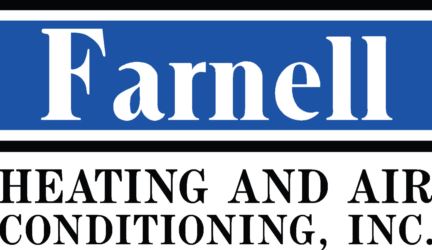
If you’re thinking over air conditioner installation in Mobile, you should also be investigating your new air conditioner’s SEER rating.
SEER is short for Seasonal Energy Efficiency Rating. Basically, it measures how effective your air conditioner is at converting electricity into chilled air. A high number indicates your air conditioner is more efficient, which is excellent for your electric expenses.
However, there are a lot of different options out there for air conditioners. And a greater SEER ranking frequently involves a more expensive price. So, how do you know which one is ideal for your home?
At Farnell Heating & Air Conditioning Inc, we provide a free, no-pressure home comfort analysis. You can request one by contacting us at 251-471-2674. Our skilled air conditioner installers will work with you to help you locate the right air conditioner for your needs. Plus, they’ll also give you a free, no-obligation estimate.
Right now, let’s go over SEER ratings and how they can influence your home’s comfort. And your electric expenses.
Does SEER Rating Really Matter?
In 2016, the federal government made new SEER guidelines. New air conditioners are required to be at minimum 13 SEER in the north United States and 14 SEER in the southeast and southwest. If you’re unsure when you had your air conditioner installed or what its SEER number is, you can find the sticker on the system outside your home. If you can’t find the sticker, you can give us a call at 251-471-2674 for help.
If your air conditioner was installed before that time, it’s likely much less efficient. Cooling technology has swiftly evolved in the past few years, with big breakthroughs in energy efficiency and smart home compatibility. Using your new air conditioner with a smart thermostat could help you save even more on air conditioning bills, since the thermostat can intuitively change your temperature settings when you’re gone.
If your current air conditioner has a SEER rating between 8 and 10, installing a 14-SEER system could save you around 30–50% on annual electrical bills. Your savings are contingent upon your air conditioner size and your temperature settings.
Is the highest SEER Rating the Best?
An air conditioner with a higher SEER rating will be more efficient at converting electricity for cooling. The highest efficiency ones, which can go as great as 26 SEER, carry ENERGY STAR® endorsement. This certification shows the air conditioner matches EPA rules for energy savings and environmental conservation.
While ENERGY STAR air conditioners are frequently more costly, you’ll usually get the difference returned over the years through lower electrical bills. These air conditioners, which are frequently rated 16 SEER and better, consume about 8% less energy than other new systems, according to ENERGY STAR.
One of the biggest differences between a 14 SEER and 16 SEER is variable-speed technology. A variable-speed air conditioner can operate at different speeds. This improves comfort for your house while keeping your utility costs low. It can also keep temperatures and humidity more consistent, since it can work for longer without consuming a lot more power.
When buying a variable-speed air conditioner, you’ll want to ensure that your furnace or air handler is compatible. This is due to the fact your air conditioner uses this equipment’s blower to send cool air throughout your home. Furnaces only run for about 20 years, so if yours is getting old, we recommend furnace installation at the same time so you can receive all the benefits of your variable-speed air conditioner.
When you’re set to replace your air conditioner, the cooling professionals at Farnell Heating & Air Conditioning Inc are available to help. Call us at 251-471-2674 to schedule your free home comfort analysis right away.
